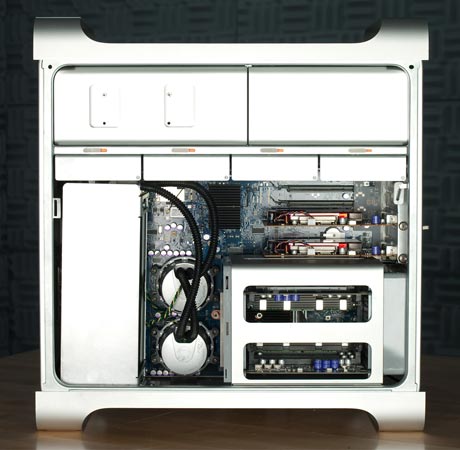Asetek liquid cools, overclocks 2.8GHz Apple Mac Pro because it can

When they're not creating liquid cooling solutions for OEM partners or for component makers like Corsair, the folks at Asetek like to water cool computers for the hell of it. A couple of months ago, the company released a video that showed how it liquid cooled an all-in-one PC, and now it's back with another project (and video): liquid cooling and overclocking a Mac Pro, ostensibly to reduce its noise level.
Asetek started with an older 2.8GHz Mac Pro, custom building the cooling solution that included two pumps and a 120mm radiator. The system was overclocked using ZDNet Clock, a utility developed by our compatriots at ZDNet.de. (More info here.) Temperature, noise level, and performance on the CineBench benchmark test were measured for this Mac Pro as well as a newer 3.2GHz version with stock air cooler.
The results? While temperatures for both were similar (47 degrees Celsius), the older Mac Pro nearly matched its newer sibling on the benchmark (7.45 vs. 7.46) and the difference in noise was substantial: the liquid cooled Mac Pro output 37.5 decibels, compared to 50 decibels from the later model.
Asetek claims it's not working on specific liquid cooling parts for Macs, and told me that it might be possible for DIY types to buy a couple of Corsair H50 liquid cooling systems (which were developed with Asetek) and use them with a Socket 1366-based Mac Pro, though it would require custom mounting. Ironically, Apple did offer liquid cooling on the Power Mac G5 several years ago, but hasn't built newer systems with anything other than air cooling.
Check out the video below to find out more about Asetek's latest experiment.
